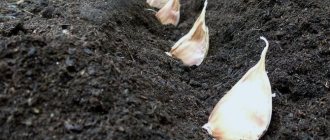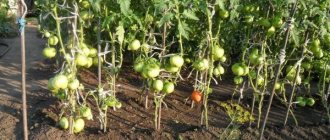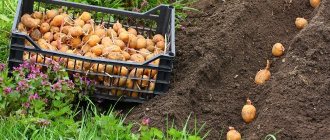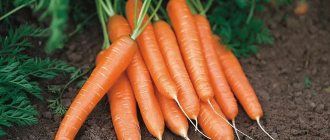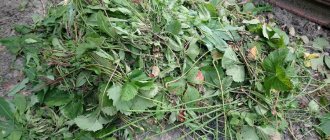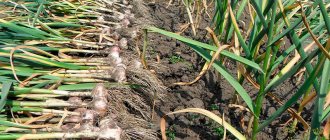Heads of cabbage are ripening in the beds, and are you already thinking about what crops to plant next year after cabbage? This is correct, because then it will be easier to prepare the ground for the new season.
Not all summer residents know which crops can be planted after which, and unwittingly deprive the plants and soil of a well-deserved rest. As a result, the soil becomes acidic, new garden crops become diseased, and all you can do is envy your neighbors’ crops. But the situation can be changed if you follow the rules of crop rotation, i.e. Change the planting location for each vegetable every year.
This simple principle keeps soil fertile longer because each vegetable uses nutrients differently. Pests and dangerous bacteria will not be able to accumulate in the soil for years, and subsequent crops will grow stronger than their predecessors, which suffer from certain diseases. As in the animal world, not all plants are “friends” with each other and may not take root in the beds where their competitor grew. This again depends on what substances they consume and in what quantities.
As for cabbage, this vegetable takes a lot of nutrients from the soil, because... its root system can penetrate to a depth of 1 m. During the growth period, cabbage needs regular feeding, and after harvesting the bed remains severely depleted. In addition, cabbage heads are food for many pests and are often affected by clubroot, powdery mildew, black spot and other diseases. Even if you took all measures to save the crop, some insects and bacteria could remain in the soil. And next year nothing will stop them from continuing to reproduce and feed again.
- Folk remedies for cabbage pests - how to treat plants
We’ll tell you how popular rumor and experience advise dealing with cabbage pests.
During the season, cabbage releases a lot of toxins into the soil, which are dangerous for many crops.
Therefore, before planting a new crop on cabbage beds, you need to take into account the characteristics of the plants. Do they have enough nutrients, is the “cabbage inheritance” dangerous for them? And there are many such plants. Let's find out in more detail what is best to plant after cabbage, and which plants should be abandoned.
What can you plant after cabbage?
Even if at the end of the season you apply organic matter and mineral fertilizers to the former cabbage beds, not all plants will be able to develop properly here. Therefore, preference should be given to unpretentious crops that do not greatly deplete the soil, or to plants that have a different nutritional regime. Popular among such crops are carrots, eggplants, potatoes, celery, parsley, dill, as well as some other plants, which we will discuss in more detail below.
After planting eggplants in beds from early cabbage, you can get a particularly rich harvest.
If you are interested in what you can plant after cauliflower, then the list of plants is practically no different from white cabbage varieties. Green crops, pumpkins, zucchini and squash will grow well in former cabbage beds. Also feel free to plant tomatoes, cucumbers and potatoes.
Now let’s take a closer look at what other crops should be planted to replace cabbages.
Cabbage crop rotation
After what can you plant cabbage?
It is recommended to plant cabbage after these crops:
- potatoes (after kohlrabi and other varieties);
- tomatoes, onions, peppers, garlic, physalis (after the white variety);
- bulb onions;
- carrots (planting is permissible);
- beet;
- beans;
- peas.
In order for transplants to take root, it is necessary to use special types of fertilizers and fertilizers.
Additionally, the following elements should be considered:
- harvest volume;
- characteristics of the soil - type, composition, volume of nutrients in the soil;
- methods of adding fertilizers;
- what crop was grown before the current planting;
- final tillage of the land - method and timing.
When using crop rotation, it is important to till the soil, allowing the land to rest fallow. Processing methods can be:
Processing methods can be:
- Grain-steam - used in particularly dry areas.
- Grain-row-crop - alternating half of row-crop and grain crops and fallow. The soil should not be left fallow.
- Grain-grass - grain crops and perennial grasses are planted in strips, without leaving the soil fallow.
- Row-crop - used in gardens with artificial irrigation or a humid climate.
- Grass-row-crop - used for lands with artificial irrigation or on a flooded area of a river bank.
- Green manure - used in areas with sandy soil.
Taking into account all the listed rules, it is worth remembering that there are vegetables after which it is not recommended to plant cabbage.
Why can’t you plant cabbage?
Any variety and type of cabbage cannot be planted in one place more than once every 3 years.
After these crops, it is strictly forbidden to plant cabbage for two years:
These vegetables literally “suck out” all the substances necessary for a rich harvest of cabbage, therefore, it is not placed in their place.
What is not allowed and what can be planted after cabbage?
At the same time, after harvesting cabbage, it is not recommended to plant fruit bushes and trees (for example, strawberries or raspberries), because in such a bed the harvest of berries will be quite meager, and it is not worth planting cabbage and other cruciferous vegetables.
But after harvesting any varieties of cabbage, you can plant potatoes, spinach, and cucumbers next year.
Crop rotation, as a planting pattern, contributes to a good harvest.
These rules allow you to better care for the soil and planted fruits. Thanks to correctly carried out manipulations, you can avoid attacks by various pests and diseases.
Additionally, this process increases soil fertility and, therefore, “feeds” the cabbage during growth.
Is it possible to plant cucumbers after cabbage?
Even necessary! Cabbage is an ideal predecessor for cucumbers, rivaled only by tomatoes and potatoes. The fact is that cucumbers are quite unpretentious and do not need abundant feeding, so the modest nutritional composition of the soil will not bother them too much. However, if you want to get strong and tasty greens, you still can’t do without fertilizers.
Next to corn, cucumbers will grow faster and produce a good harvest. Corn protects cucumbers from the wind and keeps their stems upright, protecting them from fungal diseases.
- Secrets of July sowing of cucumbers
Pick cucumbers all summer? Easily!
- How to grow cucumbers - 10 best articles from Ogorod.ru
Experience-tested tips and recommendations for all stages of growing your favorite vegetable!
After what can you plant cabbage in the garden?
Why is crop rotation important?
Soil crop rotation is the alternation of garden crops in such a way that nutrients are retained in the soil.
For garden plants you need:
- nitrogenous fertilizers - for leaf types;
- phosphorus - for potatoes, cabbage, etc.;
- potassium mixtures - for fruit trees and berry bushes.
If you plant the same plantings in the same place, then the most necessary element for growth may not be enough. To avoid various problems, it is necessary to carry out planned plant replanting. This “rearrangement” allows you to maintain the required amount of nutrients in the soil.
Such vegetable movements are also supported by the fact that the same crop can suffer from one type of disease.
Timely replanting prevents various pests from harming the planted vegetables.
In addition, this method of care makes dacha work easier - identical conditions for watering, fertilizing and mulching are provided for one planting site.
Basic rules for proper crop rotation:
- The transplant process is carried out once every 3, 5 or 10 years.
- You can replant in families or in groups (berry, fruit, etc.).
- Legumes are planted before leaf crops, and rye should be sown before root crops. It helps loosen the soil, making it impermeable to water and air.
When transplanting, it is important to take into account the “relationships” of different families. Let's understand the main types of crop rotations
Let's look at the main types of crop rotations.
Crop rotation can be of the following types:
A little about these types:
- The first type means that more than half of the field should be occupied by grain, industrial and vegetable vegetation (for example, potatoes).
- In the second option, the main volume of the field is occupied by forage plants. These include vegetables (for example, sugar beets), cereal crops, and in addition, herbs suitable for livestock feed.
- In the third option, half of the plowed area contains 1-2 types of crops. These include rice, melons and other types of vegetables.
The type of transplants is selected based on the basic requirements and capabilities of the farm. The field method is used in 5-10 fields. Thus, in a system of 10 crop rotations, potatoes are usually alternated with barley, potatoes and corn, spring crops with grasses and flax, and winter crops with spring grains.
Depending on climate characteristics, options may vary. So, 1 year, corn is planted on annual grasses or silage. From 2-4 years they grow alfalfa, from 5-6 years - grain corn, from 7 years - annual grasses, from 8 years - forage crops, from 9 years - melons (for feed).
Summer residents should take into account that the soil balance can be completely restored by alternating plantings once every 3-4 years:
- To do this, it is better to divide the garden into 3 sections: a place for vegetables that are demanding on the soil (this could be spinach, zucchini, pumpkin, potatoes and cabbage).
- Less capricious vegetables (for example, cucumber, melon, tomato, eggplant) are planted in the second plot.
- In the third plot they plant completely “peaceful” and not capricious vegetables
Is it possible to plant tomatoes after cabbage?
The answer is yes, plant it for health. Tomatoes will grow especially well in beds of early varieties of white cabbage and cauliflower. The main thing is that the area is protected from the wind. In the fall, dig the bed deeply and add 5 kg of humus per square meter, as well as 25 g of double superphosphate and potassium salt.
When planting tall varieties, do not forget to install supports. If there was a bed nearby with potatoes, eggplants, tomatoes or other nightshade crops, additional protection from pests will be needed.
- All garden pests in tables with descriptions, photos and control measures
We have compiled a “dossier” for you on each pest - save this collection!
Then plant carrots in open ground
Plot owners are often interested in the question of how to plant carrots in order to achieve maximum yield. It is worth considering that pathogens and pests accumulate in the soil. Planting vegetable and fruit crops in the same place contributes to the oversaturation of the soil with the same type of pathogenic microorganisms and pests. This negatively affects productivity.
Plant roots produce colines, which can be toxic to certain crops. If you grow the same crops for a long time, the concentration of harmful substances will increase.
Failure to follow crop rotation rules often leads to a deficiency of nutrients in the soil. Depleted soil ceases to please the gardener with a good harvest. To improve soil characteristics, alternation of fruit and vegetable crops grown in beds is used.
Important! The rules of crop rotation are quite simple, so even novice gardeners can follow the recommendations.
Which predecessor crops are most preferable?
Carrots are a popular vegetable crop that is grown by almost every gardener. It greatly depletes the soil, taking large amounts of potassium and phosphorus from the soil (several times more than tomatoes and cucumbers).
To obtain a hefty harvest, it is important to provide the plantings with proper care. It is advisable to study information about which plants can be followed by planting a vegetable with an edible sweetish orange root. The most preferable carrot predecessors for planting are:
- cabbage;
- potato;
- onion;
- tomatoes;
- cucumbers;
- pumpkin;
- zucchini.
Carrots can be grown without adding any fertilizer to the soil. However, it is important to adhere to the rules of crop rotation. In addition to the crops listed above, planting carrots in open ground after garlic shows excellent results. These plant species do not have adjacent pests.
It is recommended to systematically change the residents in the beds. Such agricultural technology helps reduce the risk of disease. Related root crops, for example, beets, should not be planted in a carrot bed. These cultures have common diseases.
The best predecessors of carrots are not only zucchini and cabbage, but also radishes. The crop ripens quickly, so there is no time to get sick. It is also advisable to plant carrot seeds after sweet potatoes and eggplants.
Note! Planting onions and garlic in open ground helps disinfect the soil. Therefore, after perennial herbaceous plants, you can safely sow the seeds of a vegetable with an edible sweetish orange root.
After what crops can carrots be planted to ensure a large and tasty harvest? Agronomists recommend sowing seeds in the soil in which garden strawberries and strawberries were grown a year ago. In this case, the carrot roots will grow not only large, but also taste sweet.
In order to get a good harvest, in addition to following the rules of crop rotation, it is important to use agrotechnical techniques, namely:
- loosen and hill up the soil;
- weeding;
- fight pests.
Agronomists do not advise planting root crops close to each other so that the taste of the fruits of both crops does not deteriorate.
Is it possible to plant zucchini after cabbage?
- Zucchini: planting, growing and care in open ground
We'll tell you how to plant zucchini and take care of them until harvest.
If you decide to plant zucchini instead of cabbage, then this will be a good idea. But it’s better to choose a bed where early or mid-season varieties of cabbage grew, otherwise the zucchini will not yield as much as you would like. At the end of the season, dig up the bed using a spade and add a bucket of rotted manure, 30 g of superphosphate and 15 g of potassium salt per square meter.
Like zucchini, pumpkins and squash do not grow well in plots of late varieties of cabbage.
Soil for cabbage
Cabbage itself is also quite picky about the soil. For example, the soil should not be allowed to have high acidity - this will cause a poor harvest of this vegetable. This factor causes such a common cabbage disease as clubroot. In addition, too acidic soil significantly reduces the effectiveness of many fertilizers applied to cabbage. Thus, even with good fertilizing, they simply will not be of any use, and the reason for this is the increased acidity of the soil.
In order to reduce acidity, the soil is limed. To do this, add dolomite flour, chalk, slaked lime or peat ash directly into the soil before digging. Dolomite flour has proven itself especially well due to its high calcium content, which is what all varieties of cabbage need.
Cabbage takes organic fertilizers very well. Therefore, in the fall, you can add a bucket of compost or well-rotted manure to the future cabbage bed.
If this is done, the amount of mineral fertilizers can be reduced by half. When it is not possible to add organic matter, you will have to make do with mineral additives - superphosphate, potassium sulfate, urea. For depleted soil, the proportions are approximately as follows: 40-45g per 1 sq.m. each of these substances. If the soil is good and fertile, fertilizing is also needed, but in a minimal amount, so the dosage is halved.
Among all types of soil, cabbage most loves humus-rich loams. Not surprising, because it is precisely this soil structure that best retains moisture, which is so necessary to nourish the roots. However, excess moisture will also not benefit the cabbage. If there is a close occurrence of groundwater in the area, then it is necessary to make grooves to drain excess moisture.
When choosing a site for cabbage, you need to take into account that it is very light-loving. In order for her to fully develop, she needs at least 13 hours of daylight.
Is it possible to plant onions after cabbage?
Onions grow well in areas where organic matter has been generously added. And cabbage beds are just like that, so plant this vegetable on them next year. Also, onions will grow healthy after potatoes, tomatoes, cucumbers, and zucchini. And if you alternate planting onions and carrots in the garden every year, these plants will delight you with high yields.
Garlic will take root well in place of early cabbage and potatoes. But remember that this crop is often affected by stem nematode, so it cannot be planted in the same place twice in a row.
What is crop rotation and what is it based on?
The list of vegetables that can be grown in one place for several years in a row is very short, and there was no place for cabbage in it. This is due both to the fact that it removes a colossal amount of fertilizer from the soil, depleting it, and to the fact that it has many pests, most of which overwinter in the surface layers of the earth. Actually, these are the two main reasons that necessitate crop rotation.
The rules of crop rotation prescribe not to plant related crops after any vegetable, so that possible pests and pathogens that have accumulated in the garden do not destroy the new plantings. In addition, the rules advise, after those crops that absorb large amounts of nutrients from the soil, to plant those that have little demand on soil fertility. This second problem is partially solved by alternating crops whose roots penetrate deep into the soil and those whose root system is mainly located in the upper layers of the soil.
However, in any case, once every 5–6 years you should allow the soil to rest and not plant anything in the garden bed. Of course, for summer residents this is almost impossible: 4–6 acres is not enough. Therefore, you have to “spin.”
Of great benefit is periodic sowing after harvesting in a bed of green manure - herbs that are mowed after they grow and buried in the ground. These are, for example, lupine, clover, oats, etc.
While observing the rules of crop rotation, we must remember about the general conditions necessary for the growth of a particular crop: soil moisture, illumination of the bed, acidity, etc.
Ideally, grass should be sown after each crop.
Will beets grow well after cabbage?
- 6 steps to a bumper beet harvest
Growing beets is quite easy, but not everyone succeeds in getting a super harvest. We show you how to achieve this in 6 simple steps!
Beets grow well after tomatoes, cucumbers, potatoes and legumes. Somewhat worse - after peas. But after cabbage, this root vegetable does not feel very good. Although, according to the observations of some summer residents, beets give a decent harvest if planted after early varieties of cabbage.
What can you plant after cabbage and carrots next year?
Cabbage, under which large doses of organic fertilizers are applied, is a very good predecessor crop for onions, garlic, beets, carrots, which need fertile soil, but do not like fresh manure.
After any type of cabbage you can also plant:
- nightshades - potatoes, tomatoes, peppers, eggplants, physalis;
- pumpkin - cucumbers, zucchini, pumpkin, watermelons, melons;
- legumes - peas, beans, beans;
- garden strawberries.
Carrots give excellent yields when sown after cabbage, abundantly fertilized with organic matter.
After carrots you can plant:
- cabbage, radish, turnip;
- beets;
- onion garlic;
- Solanaceae;
- legumes;
- strawberries
What not to plant after cabbage
Many plants will feel uncomfortable in beds where cabbage grew last year. It is better not to plant them, so as not to provoke an invasion of pests and a surge in diseases. First of all, these are all plants related to cabbage from the Cruciferous family:
- swede,
- mustard,
- daikon,
- watercress,
- shepherd's purse,
- rape,
- radish,
- radish,
- turnip,
- rapeseed,
- turnip,
- horseradish, etc.
Also, after cabbage, beets, garden strawberries (strawberries), and legumes (beans, peas, soybeans, lentils, etc.) will grow worse.
Is it possible to plant another variety or hybrid of this vegetable after cabbage?
It is undesirable because, as mentioned above, this can lead to plant disease and reduced yield. Despite the resistance of hybrids to diseases and pests, they are unlikely to like depleted soil, and it will take a lot of time to restore it. Varietal cabbage will have a hard time at all, because... her immunity in such beds will be greatly weakened. Therefore, after cabbage, plant other plants, and after 2-5 years you can return the queen of the beds to its old place.
If you do plant cabbage after cabbage, take care to protect it from the most common pests: cabbage flies, white butterflies, slugs, mole crickets and cabbage cutworms. To do this, plant marigolds among the heads of cabbage; they will repel insects with a pungent odor and will not take away much moisture and nutrition from the plants.
Over the years, you may have found some patterns in the way other crops grow in former cabbage beds. Some conclusions may not coincide with generally accepted ones. In this case, share your observations with other readers. And if you are interested in the topic of crop rotation, you can also read what should be planted after cucumbers and early potatoes.
What can be planted and after what?
Here we will look at what is allowed to be planted and sowed after certain specific crops. The recommendations look like this:
- Carrot. It is best to plant cucumbers, early potatoes or onions at once. An acceptable option is planting after tomatoes or cabbage.
- Onion. It is better to place this crop on the soil on which cabbage, nightshade, cucumber or early potatoes grew in the past. If there is absolutely no choice, then it is allowed to plant onions after grains or legumes.
- Tomatoes. They are less demanding on the soil, so they are allowed to be placed in the former place of onions, legumes, cabbage, cucumbers or root vegetables.
- Cucumbers. Here the predecessors can be all legumes (except beans), onions, root vegetables, potatoes, cabbage, and nightshades.
Interesting: Why are cucumbers bitter, what to do
Good “predecessors” for cabbage
The choice of the most useful “predecessors” is due to the cabbage species’ strong love for nitrogen. The culture responds with gratitude even to fresh manure. This is precisely the reason for the recommendation to prioritize cabbage in crop rotation.
Important! It is recommended to dig up the soil for the beds in the fall. During this work, fresh manure should be added to the soil. When planting late-ripening varieties, spring is perfect for preparatory work.
Species diversity of cabbage
All of the “predecessors” listed below do not require nitrogen in the soil for their development. The substrate remains sufficiently enriched with organic matter and allows cabbage to fully develop and grow.
cucumbers
Due to the fact that cucumbers practically do not deplete the soil throughout the entire growing period, they are an excellent “predecessor” for cabbage. In principle, all pumpkin species are not very demanding of nitrogen, which is subsequently so important for the healthy growth of all types of cabbage vegetables.
Onion
Due to the fact that the onion family feeds on the surface of the soil, it does not lay claim to those micronutrients that cabbage so needs. The difference in nutritional modes makes them convenient “predecessors” for cabbage vegetables.
Onion crop is an excellent “predecessor” for cabbage
Legumes
Planting any legumes as “predecessors” is extremely beneficial for cabbage. It could be peas or beans. Different growing and feeding conditions allow these species to practically not compete with each other for much-needed microelements. Quite often, experienced gardeners advise using legumes as green manure, which is so necessary for “unloading” tired soil.
Roots
The most famous root vegetables include beets and carrots. Their use before planting cabbage is possible due to the difference in the depth of root penetration. The root system of almost all root crops lies at a depth of 2 m or more. While cabbage is deepened no more than 1 m. Thanks to this, neither carrots nor beets deplete the soil and do not draw out from it the elements so necessary for feeding the head of cabbage.
Features of planting cabbage
When choosing ready-made seedlings, it is important to remember several rules. The appearance of the bushes should indicate their healthy condition, which means:
- strong stems without black threads and dots;
- absence of swelling by the nodules, which indicates a clubroot lesion.
Proper planting in the ground is the key to harvest
Before planting, the strongest, healthiest seedlings that have at least 5 fresh leaves are selected. The bushes are rooted into the soil to the rosette level so that the roots are completely covered with soil. After this, the soil is lightly trampled and then watered.
To get a good cabbage harvest, you should prepare the ground for seedlings. In the fall, humus is mixed with turf, adding ash to it, and mixed thoroughly. In addition to the fact that ash is an excellent source of useful substances and microelements, it also has an antiseptic effect that protects seedlings from the appearance of blackleg.
When choosing a variety, it is better to focus on options such as:
It is not necessary to limit yourself to just one culture. In addition to white cabbage, you can grow equally tasty and healthy cabbage varieties: Kohlrabi, red cabbage or Manoko (which is distinguished by an elongated cabbage shape) and others.
Growing seeds
The success of the event depends on the quality of planting material. Often seeds deteriorate due to improper storage and become unsuitable for use. Therefore, before planting seeds, it is recommended to check them for germination. First, they are wrapped in a cloth lightly moistened with water and left in this form for five days. Then the seeds are placed in cold water, after adding a nitrophoska solution to it.
Proper cultivation of seeds will yield results
You can acclimate seeds to cold by storing them in the refrigerator, setting the temperature to -1 degree Celsius.
Timing for planting cabbage seedlings
When exactly you can open the “cabbage” season depends on the type of product. Early varieties begin to be planted in mid-March, mid-late varieties - in early April. Before planting the seeds, wood ash and superphosphate are added to the soil. The finished soil mixture is placed in a box. Grooves are made on its surface. The distance between them should be at least 10 cm, and the depth of each of them should be on average 1 cm. The seeds are sprinkled with a little earth on top, and the seedlings are watered. From the moment well-developed stems appear and there are five leaves on them, cabbage is planted in open ground.
Crop rotation table
(based on the book “The Basics of Crop Rotation”, author I. Melnikov)
| Bad predecessor | Good predecessor | Bad neighbor | Good neighbor | Helpful neighbor |
| Cabbage | ||||
| - radish, radish, cucumbers, cabbage | + potatoes, onions, tomatoes | - parsley, tansy, grapes | + lettuce, tomatoes, cucumbers, potatoes, chard, spinach, beets, bush beans, chicory | + celery will protect cabbage from flea beetles, leeks will repel cutworm caterpillars, dill will repel caterpillars and aphids, and borage will repel snails. Rosemary, thyme, hyssop, chamomile, sage, mint - protect against cabbage butterflies. |
| Carrot | ||||
| - celery, parsnip, scorzonera, carrots, parsley, fennel | + cabbage, early potatoes | - anise, dill | + radish, tomato, spinach, lettuce, chard, garlic, peas, radish | + sage, rosemary, tobacco, onion - repel carrot flies. |
| Potato | ||||
| - tomatoes, peppers, eggplants | + legumes, cucumbers, cabbage | - celery, sunflower, quinoa | + corn, beans, beans, spinach, radishes, cabbage, lettuce | + nasturtium, marigolds, tansy, catnip, coriander, beans - repel the Colorado potato beetle |
| cucumbers | ||||
| - rutabaga, melon, pumpkin, zucchini, cucumbers | + early white and cauliflower cabbage, tomatoes | - potato | + beans, beans, lettuce, onions, garlic, radishes, beets, dill, spinach, celery, cabbage, chamomile, sunflower, borage, fennel | + corn – stimulates growth |
| Tomatoes | ||||
| - peppers, eggplants, tomatoes | + early white and cauliflower, cucumber, legumes | - fennel, kohlrabi, dill | + bush beans, cabbage, celery, corn, radishes, lettuce, radishes, carrots, beets, garlic, spinach, parsley, chives | + borage, lemon balm, basil, marigold, mint, savory, sage – improve the taste and quality of tomatoes |
| Beet | ||||
| - spinach, beets, chard | + early potatoes, cabbage, cucumbers, tomatoes, legumes, pumpkin | - chard, corn, potatoes, beans | + root celery, tomatoes, lettuce, radishes, cucumbers, radishes, onions, cabbage, garlic | — |
| Eggplant | ||||
| - tomatoes, peppers, eggplants | + early white and cauliflower, cucumber, legumes | — | + thyme, bush beans | + beans repel the Colorado potato beetle |
| Pepper | ||||
| - pumpkin, tomatoes, peppers, eggplant | + early white and cauliflower, cucumber, legumes | - fennel | + basil | — |
| Onion | ||||
| - corn, onion | + tomatoes, cucumber, cabbage, early potatoes | - sage, beans, peas, beans | + watercress, cucumbers, lettuce, beets, radishes, spinach, strawberries, savory | + carrots repel onion flies |
| Leek | ||||
| — | — | bush beans, carrots, celery, lettuce, beets | — | They are mutually beneficial with celery, so it’s good to plant them in alternating rows |
| Garlic | ||||
| — | + tomatoes, cucumbers | - cabbage, beans, peas | + carrots, cucumbers, beets, tomatoes, strawberries | — |
| Beans | ||||
| - legumes | + potatoes, root vegetables, tomatoes, early white cabbage and cauliflower | - fennel, onion, garlic, beans, peas | + strawberries, lettuce, chard, cabbage, radishes, tomatoes, cucumbers, beets, potatoes, corn, spinach, celery | + savory protects against aphids |
| Beans | ||||
| - peas, beans | + potatoes, root vegetables, tomatoes, early white cabbage and cauliflower | - garlic, wormwood, marigolds, onions, leeks | + cucumbers, sweet corn, potatoes, radishes, radishes, spinach, rosemary, yarrow, lavender, oregano | + basil protects against bean weevil |
| Peas | ||||
| - beans, peas | + potatoes, root vegetables, tomatoes, early white cabbage and cauliflower | - wormwood, tomatoes, onions, garlic | + kohlrabi, radish, cucumbers, parsley, radishes, carrots, turnips, lettuce | — |
| Corn | ||||
| - corn, radish, onion, radish | — | - beets, celery | + early potatoes, tomatoes, lettuce, cucumbers, beans, beans | — |
| Salad | ||||
| - lettuce, chicory, endive | + early potatoes, tomatoes, cucumbers | - crops with thick tops (beets or carrots), celery | + spinach, beans, cucumbers, tomatoes, peas, radishes, cabbage, radishes, strawberries, chrysanthemums | + onions protect against aphids |
| Spinach | ||||
| - beets, spinach, pumpkin | + early potatoes, cabbage, radishes, tomatoes | — | + onions, potatoes, tomatoes, lettuce, celery, carrots, cabbage, beans, radishes, radish, parsley, strawberries | — |
| Parsley | ||||
| - parsley, carrots, celery, parsnips | + cucumbers, cabbage | — | + tomatoes, radishes, asparagus, peas, lettuce, leeks, strawberries, roses | + planted parsley next to roses drives away aphids, and from strawberries - slugs |
| Celery | ||||
| - parsley, celery, parsnips, carrots, fennel | + cabbage, early potatoes | - potatoes, parsley, carrots, corn | + cucumbers, tomatoes, spinach, bush beans, cabbage, beets, lettuce | + white cabbage stimulates the growth of celery, and celery drives away white butterflies from it |
| Radish and radish | ||||
| - radish, radish, cabbage, corn | + tomatoes, onions, cucumber, early potatoes | - hyssop | + watercress, peas, carrots, tomatoes, garlic, chard, onions, parsley, beets, beans, nasturtium, spinach | + lettuce protects against flea beetles |
| Pumpkin | ||||
| - melon, pumpkin, pepper, cucumbers | + potatoes, cabbage, root vegetables | - potato | + corn | + corn provides shade, saving from the heat |
Summarize.




